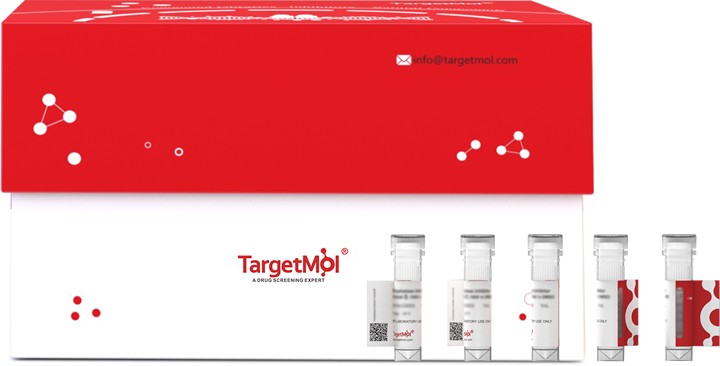- Remove All
 Your shopping cart is currently empty
Your shopping cart is currently empty
C-ABL/ABL1 Protein, Human, Recombinant (GST)
c-Abl belongs to the class of tyrosine kinases and is the prototype of a subfamily which includes two members, c-Abl and Arg (Abl-related gene). Both proteins are localized at the cell membrane, actin cytoskeleton and cytosol, and c-Abl is present in the nucleus as well. c-Abl is a non-receptor tyrosine kinase that participates in multiple signaling pathways linking the cell surface, cytoskeleton, and the nucleus. Recent in vitro studies have also linked c-Abl to amyloid-beta-induced toxicity and tau phosphorylation. c-Abl has been implicated in many cellular processes including differentiation, division, adhesion, death, and stress response. c-Abl is a latent tyrosine kinase that becomes activated in response to numerous extra- and intra-cellular stimuli. The c-Abl protein is a ubiquitously expressed nonreceptor tyrosine kinase involved in the development and function of many mammalian organ systems, including the immune system and bone. It regulates the cellular response to TAM through functional interaction with the estrogen receptor, which suggests c-Abl as a therapeutic target and a prognostic tumor marker for breast cancer. c-Abl also plays a key role in signaling chemokine-induced T-cell migration. In addition, c-Abl contains NLSs (nuclear localization signals) and DNA-binding sequences important for nuclear functions. c-Abl has become an important therapeutic target in human chronic myeloid leukaemia.Cancer ImmunotherapyImmune CheckpointImmunotherapyTargeted Therapy

C-ABL/ABL1 Protein, Human, Recombinant (GST)
| Pack Size | Price | Availability | Quantity |
|---|---|---|---|
| 20 μg | $237 | In Stock | |
| 100 μg | $532 | 7-10 days | |
| 200 μg | $907 | 7-10 days | |
| 500 μg | $1,840 | 7-10 days |
Product Information
| Biological Activity | The specific activity was determined to be 240 nmol/min/mg using synthetic Abl peptide (EAIYAAPFAKKK) as substrate. |
| Description | c-Abl belongs to the class of tyrosine kinases and is the prototype of a subfamily which includes two members, c-Abl and Arg (Abl-related gene). Both proteins are localized at the cell membrane, actin cytoskeleton and cytosol, and c-Abl is present in the nucleus as well. c-Abl is a non-receptor tyrosine kinase that participates in multiple signaling pathways linking the cell surface, cytoskeleton, and the nucleus. Recent in vitro studies have also linked c-Abl to amyloid-beta-induced toxicity and tau phosphorylation. c-Abl has been implicated in many cellular processes including differentiation, division, adhesion, death, and stress response. c-Abl is a latent tyrosine kinase that becomes activated in response to numerous extra- and intra-cellular stimuli. The c-Abl protein is a ubiquitously expressed nonreceptor tyrosine kinase involved in the development and function of many mammalian organ systems, including the immune system and bone. It regulates the cellular response to TAM through functional interaction with the estrogen receptor, which suggests c-Abl as a therapeutic target and a prognostic tumor marker for breast cancer. c-Abl also plays a key role in signaling chemokine-induced T-cell migration. In addition, c-Abl contains NLSs (nuclear localization signals) and DNA-binding sequences important for nuclear functions. c-Abl has become an important therapeutic target in human chronic myeloid leukaemia.Cancer ImmunotherapyImmune CheckpointImmunotherapyTargeted Therapy |
| Species | Human |
| Expression System | Baculovirus Insect Cells |
| Tag | N-GST |
| Accession Number | P00519-2 |
| Synonyms | v-abl,p150,JTK7,c-ABL1,c-ABL,bcr/abl,ABL proto-oncogene 1, non-receptor tyrosine kinase,ABL |
| Construction | A DNA sequence encoding the amino acid sequence (Pro 137-Ser 554) of human ABL1 isoform B (NP_009297.2) was fused with the GST tag at the N-terminus. Predicted N terminal: Met |
| Protein Purity | > 75 % as determined by SDS-PAGE  |
| Molecular Weight | 74 kDa (predicted); 65 kDa (reducing conditions) |
| Endotoxin | < 1.0 EU/μg of the protein as determined by the LAL method. |
| Formulation | Supplied as sterile 20 mM Tris, 300 mM NaCl, 25% glycerol; 0.1 mM PMSF, 0.1 mM EDTA, 0.5 mM GSH, pH7.5. |
| Reconstitution | A Certificate of Analysis (CoA) containing reconstitution instructions is included with the products. Please refer to the CoA for detailed information. |
| Stability & Storage | It is recommended to store the product under sterile conditions at -20°C to -80°C. Samples are stable for up to 12 months. Please avoid multiple freeze-thaw cycles and store products in aliquots. |
| Shipping | Shipping with blue ice. |
| Research Background | c-Abl belongs to the class of tyrosine kinases and is the prototype of a subfamily which includes two members, c-Abl and Arg (Abl-related gene). Both proteins are localized at the cell membrane, actin cytoskeleton and cytosol, and c-Abl is present in the nucleus as well. c-Abl is a non-receptor tyrosine kinase that participates in multiple signaling pathways linking the cell surface, cytoskeleton, and the nucleus. Recent in vitro studies have also linked c-Abl to amyloid-beta-induced toxicity and tau phosphorylation. c-Abl has been implicated in many cellular processes including differentiation, division, adhesion, death, and stress response. c-Abl is a latent tyrosine kinase that becomes activated in response to numerous extra- and intra-cellular stimuli. The c-Abl protein is a ubiquitously expressed nonreceptor tyrosine kinase involved in the development and function of many mammalian organ systems, including the immune system and bone. It regulates the cellular response to TAM through functional interaction with the estrogen receptor, which suggests c-Abl as a therapeutic target and a prognostic tumor marker for breast cancer. c-Abl also plays a key role in signaling chemokine-induced T-cell migration. In addition, c-Abl contains NLSs (nuclear localization signals) and DNA-binding sequences important for nuclear functions. c-Abl has become an important therapeutic target in human chronic myeloid leukaemia.Cancer ImmunotherapyImmune CheckpointImmunotherapyTargeted Therapy |
Dose Conversion
Sci Citations
Calculator
Tech Support

Copyright © 2015-2025 TargetMol Chemicals Inc. All Rights Reserved.


